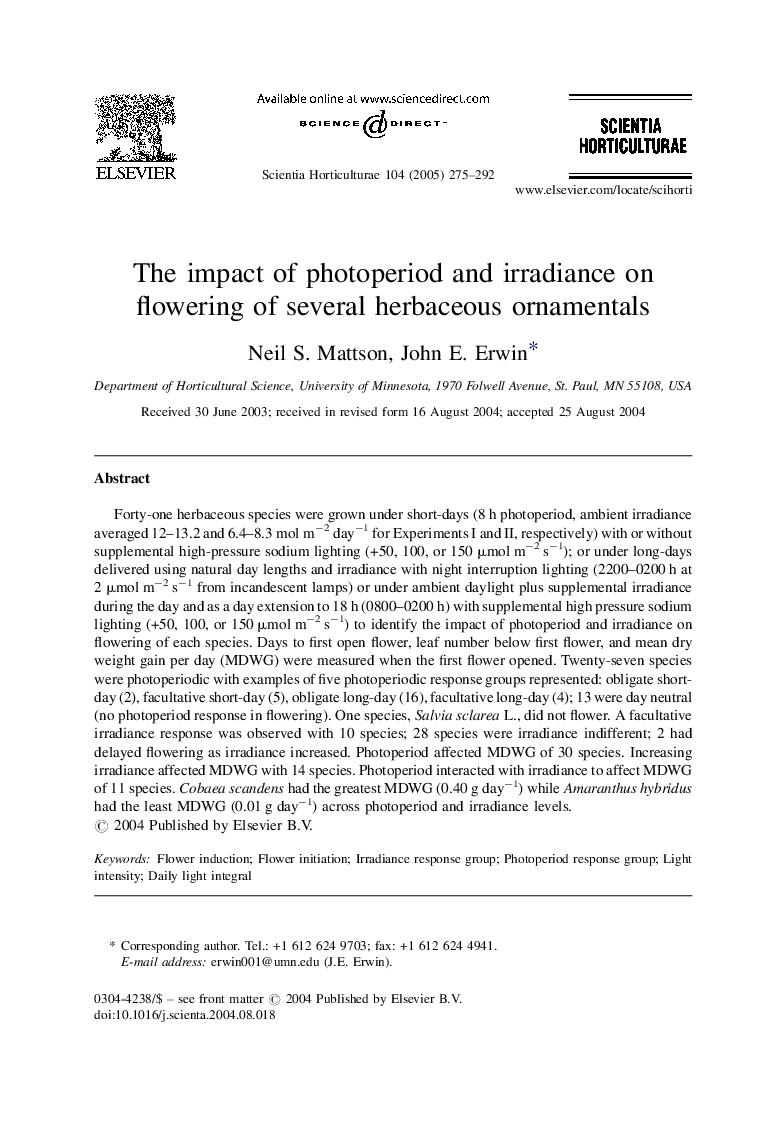| Article ID | Journal | Published Year | Pages | File Type |
|---|---|---|---|---|
| 9488804 | Scientia Horticulturae | 2005 | 18 Pages |
Abstract
Forty-one herbaceous species were grown under short-days (8 h photoperiod, ambient irradiance averaged 12-13.2 and 6.4-8.3 mol mâ2 dayâ1 for Experiments I and II, respectively) with or without supplemental high-pressure sodium lighting (+50, 100, or 150 μmol mâ2 sâ1); or under long-days delivered using natural day lengths and irradiance with night interruption lighting (2200-0200 h at 2 μmol mâ2 sâ1 from incandescent lamps) or under ambient daylight plus supplemental irradiance during the day and as a day extension to 18 h (0800-0200 h) with supplemental high pressure sodium lighting (+50, 100, or 150 μmol mâ2 sâ1) to identify the impact of photoperiod and irradiance on flowering of each species. Days to first open flower, leaf number below first flower, and mean dry weight gain per day (MDWG) were measured when the first flower opened. Twenty-seven species were photoperiodic with examples of five photoperiodic response groups represented: obligate short-day (2), facultative short-day (5), obligate long-day (16), facultative long-day (4); 13 were day neutral (no photoperiod response in flowering). One species, Salvia sclarea L., did not flower. A facultative irradiance response was observed with 10 species; 28 species were irradiance indifferent; 2 had delayed flowering as irradiance increased. Photoperiod affected MDWG of 30 species. Increasing irradiance affected MDWG with 14 species. Photoperiod interacted with irradiance to affect MDWG of 11 species. Cobaea scandens had the greatest MDWG (0.40 g dayâ1) while Amaranthus hybridus had the least MDWG (0.01 g dayâ1) across photoperiod and irradiance levels.
Related Topics
Life Sciences
Agricultural and Biological Sciences
Horticulture
Authors
Neil S. Mattson, John E. Erwin,
